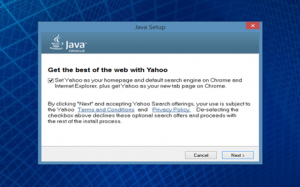
Email is a primary form of communication in the business world because it allows people to work within their own schedules and time-management styles.
With its ease of use, however, we may be sending more messages than necessary, contributing to a general email overload that can mask which items are most important.
Here are some common pet peeves in regards to this lightning-fast communication that may help you refine your email practices:
Sending/Responding to All
Before you send a mass email to all of your contacts or reply to all on an email, ask yourself if each of those people really have a need to know the information within your message.
While this may cover all bases, it is disrespectful to the recipients of your message that aren’t an essential part of the conversation by wasting their time and clogging their inbox. [Read more…] about Avoid These Five Email Annoyances



 software from your computer. The only things you need to watch for now are third-party programs piggybacking on the installs or updates of other programs.
software from your computer. The only things you need to watch for now are third-party programs piggybacking on the installs or updates of other programs.